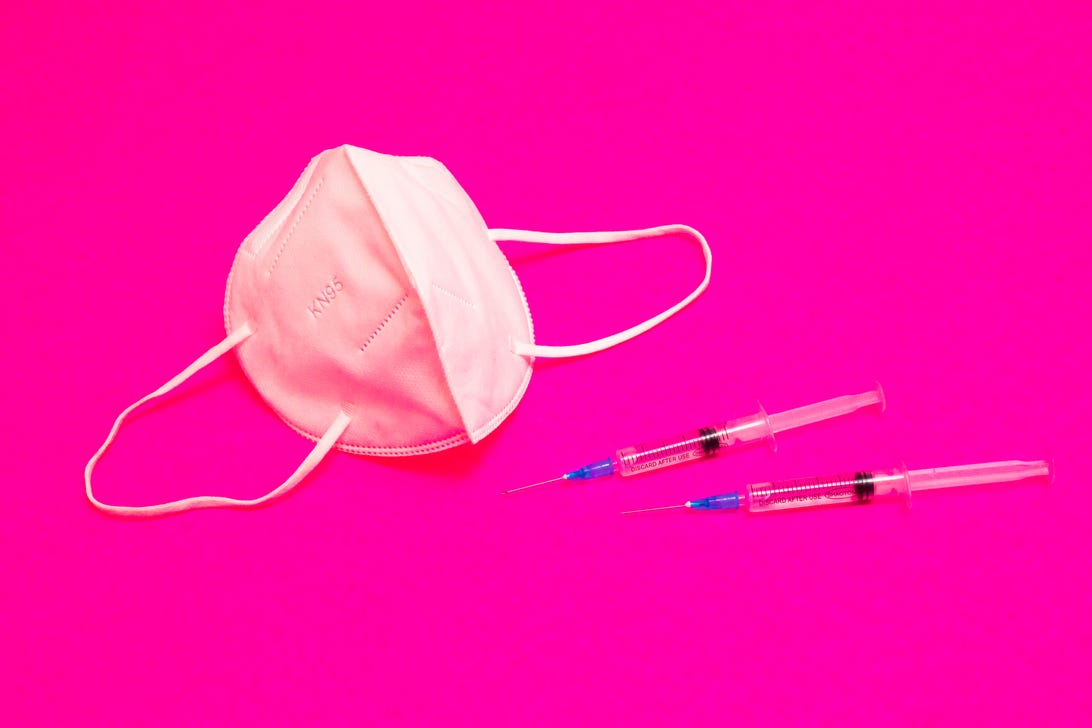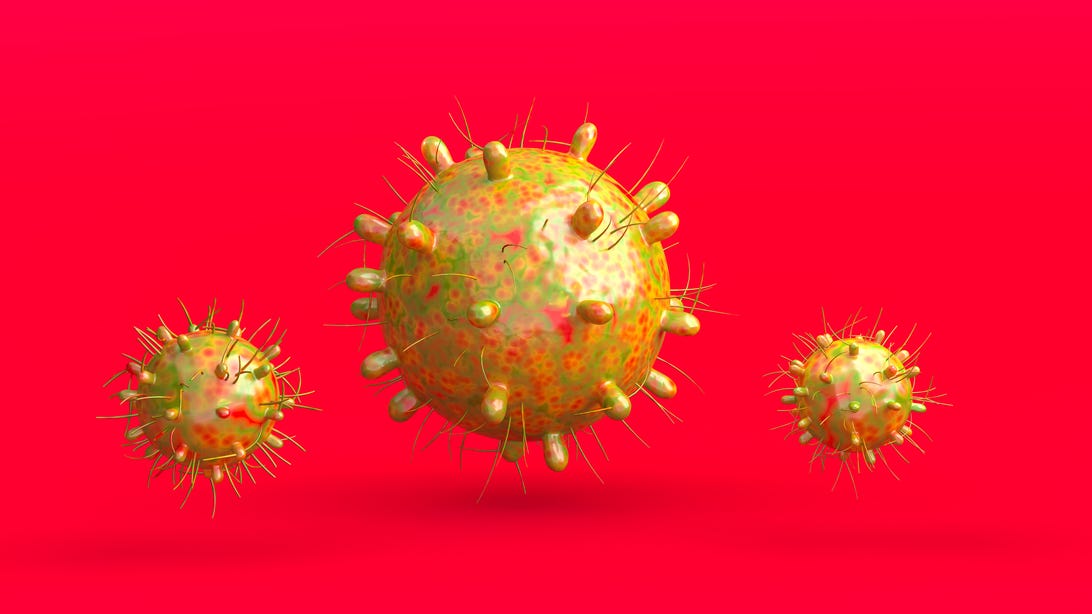For the most up-to-date news and information about the coronavirus pandemic, visit the WHO and CDC websites.
As the US hovers around a once-unfathomable milestone, 1 million deaths from COVID-19, cases and hospitalization rates are rising across the country.
Newer, more contagious versions of the omicron variant are responsible for the current rise. While numbers are still lower than the winter’s surge, the rise threatens the relaxation of restrictions, like dropped mask mandates, and a return for some people to “normal” life.
According to one federal official who spoke with The New York Times, 100 million Americans could be infected with COVID-19 this fall and winter during a surge fueled by indoor gatherings and reduced immunity. While that’s still fewer people than were affected by last winter’s omicron wave, the estimation (based on unspecified models, the Times reported) found that strains from the omicron family would likely be responsible for about 30% of the US population getting infected.
Omicron and all its forms are currently causing 100% of COVID-19 cases in the US, according to a May 5 report by the US Centers for Disease Control and Prevention. There are several lineages of omicron, according to the CDC, but BA.2 (originally called “stealth omicron”) and BA.2.12.1 make up most COVID-19 cases in the US. (BA.1 was the “original” omicron that caused the winter surge.)
As of May 4, cases are up about 21% compared with the previous seven-day average, the CDC said. Hospitalizations also increased about 17%. Dr. Eric Topol, director of the Scripps Research Translational Institute, said on Twitter that the current “rate of rise” is similar to the delta variant increase of last summer, while still remaining relatively low.
A report from the CDC recently confirmed that nearly 60% of Americans and as many as 75% of children have had COVID-19 as of February 2022. Researchers looked at infection-induced antibodies, which are different from vaccine-induced antibodies, Dr. Kristie Clarke, a researcher on the study, noted in a media briefing. She also said prior infection doesn’t necessarily equate to immunity to COVID-19, as researchers didn’t measure the level of protective antibodies against COVID-19 reinfection or severe disease.
Here’s what to know about BA.2 and the other versions of omicron.
What are subvariants or sublineages?
Variants are made up of multiple lineages and sublineages. Each variant has a “parent” lineage, according to the CDC, followed by other lineages, which you can think of like a family tree. As the virus spreads between people, mutations occur, but not all of them change the characteristics of the virus in meaningful ways.
The omicron variant and its sublineages made the virus much more contagious and capable of infecting more people, but it’s led to less severe disease, on average, than the delta variant.
Genomic surveillance can detect variants and sublineages. Scientists in South Africa were able to quickly identify omicron as a new variant this winter because of the way it presents through PCR tests. The original omicron causes a dropped signal or marker on the test that sets it apart from delta, which was the dominant variant prior to omicron. BA.2, however, doesn’t have the same signal, called an S gene target failure. This makes it more stealthy, though genomic sequencing (which happens to about 10% of COVID-19 PCR tests in the US) will detect all omicron subvariants and coronavirus variants in general.

Sarah Tew/CNET
What are the symptoms of the current COVID variants?
Data available currently suggests that BA.2 doesn’t cause more severe disease than the original omicron variant, even if it is more transmissible. (The WHO notes that the transmission difference between original omicron and stealth omicron is smaller than the difference between delta and omicron.)
There isn’t research available right now to suggest BA.2 causes different symptoms than the original omicron variant. For many people who catch COVID-19 (especially those who are fully vaccinated or boosted), COVID-19 symptoms resemble cold symptoms such as sore throat, runny nose and fatigue. Staying home if you’re sick and not just assuming it’s allergies or a cold if you have mild symptoms is especially important during periods when COVID-19 cases are on the rise, like right now.
Read more: Is It Allergies or COVID? How to Tell the Difference
Is BA.2.12.1 more severe? Will the vaccines work?
The WHO, considering all available real-world data, concluded there’s no reported difference in severity between omicron BA.1 and BA.2, despite the latter’s growth advantage.
Between BA.2 and BA.2.12.1, the newer version is believed to be about 25% more transmissible, CDC Director Dr. Rochelle Walensky said at a media briefing, but more evaluation and research is underway.
Like the original omicron, BA.2 means more fully vaccinated people will experience breakthrough infections. But those who are fully vaccinated, and especially boosted against COVID-19, “continue to have strong protection against severe disease,” Walensky said at the briefing.
In a March 8 statement, the WHO said that though there are cases of people getting sick with BA.2 after they’ve already had COVID-19 caused by omicron, early data suggests that infection with BA.1 provides “substantial protection” against BA.2, at least for a while.
The information contained in this article is for educational and informational purposes only and is not intended as health or medical advice. Always consult a physician or other qualified health provider regarding any questions you may have about a medical condition or health objectives.
